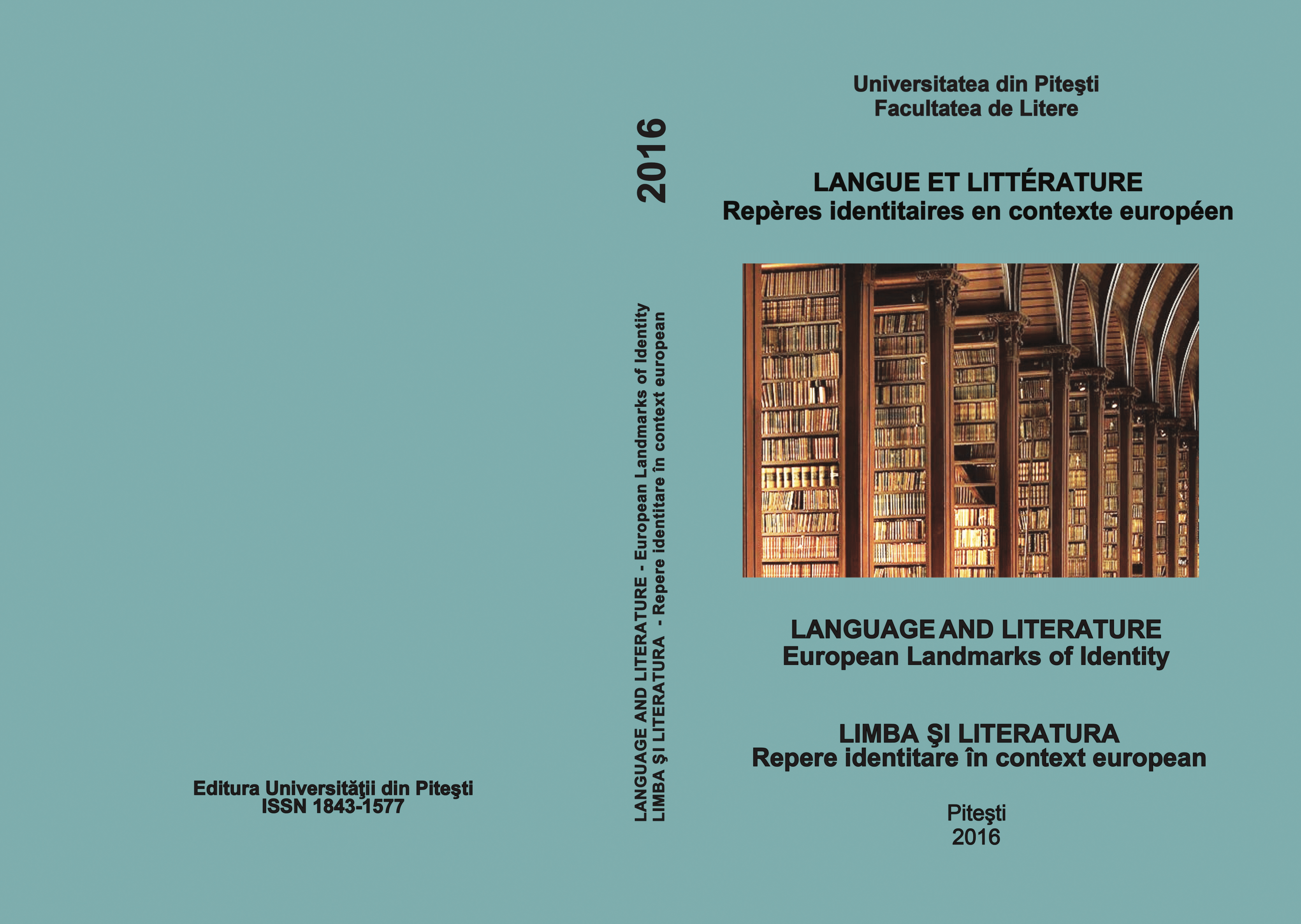PLURIPERSPECTIVISM AND THE PERCEPTION VALENCE IN THE HALLIPA SERIES
PLURIPERSPECTIVISM AND THE PERCEPTION VALENCE IN THE HALLIPA SERIES
Author(s): Simona LiutievSubject(s): Language and Literature Studies
Published by: Editura Universităţii din Piteşti
Keywords: reflector; consciousness; narrative suspension
Summary/Abstract: Wishing to modernize the Romanian novel, Hortensia Papadat Bengescu created a writing marked by narrative inconstancy which emphasizes a multitude of stylistic formulae. Over the aesthetic background of balzacianism, naturalism, proustianism, expressionism, decandent-existentialism, alternating fresco with details, she uses a combination of impressionist techniques, mythical projections, archetypes and symbols that converge around a heteroclite stylistic level, so that reading of her novels plays a soteriological role. The reader is engaged in a hermeneutical labyrinth that will point out profound significance. Bengescu often justifies the stylistically changes with the reflector-character’s mood shifts or psychic faculties: intuition, reflection, emotion. After the first novel of the series, the author cannot risk an introspective prose and chooses not to directly show “the house of senses”; instead, the omniscient narrator provides the necessary elements so that the reader will be able to understand the situation. Starting with the third novel, the main function is given to the account whilst the reflector-characters disappear, the consciousness conditions are thoroughly analyzed, and the lack of plot is grammatically suggested by using the past perfect tense, the tense of suspending action. Except for the first novel, where the reflector-character doesn’t contest her perceptions, in the next novels these perceptions are constantly replaced or subdued by a neutral narrator. But, above all, one can identify a narrator who chaffs, debates, borrows and lends others’ vocabulary. Liviu Rebreanu was the first to notice the narrative innovation of the reflector-character, the author’s spokesperson, with the role of interiorizing the plot. The importance of chronological evocation is diminished due to the time-consciousness, linked with Bergson’s concepts of time and duration, the uninterrupted stream, those moments of expansion or contraction accordingly with the individual meaning. Yet, the watchword for Bengescu’s narrative is flashback. The characters give themselves up to recalling different events, so the present tense is put in the second place and makes the impression of alert pace exactly because most of the daily actions are less important than the past ones. The ellipse has an important function: months and seasons between actions are suspended. This “narrative delay” (Umberto Eco), that makes the past more current than the present, has lead to the similarity between Bengescu’s and Proust’s writing, this auctorial free movement on the hour plate, a time outside time. The Janus-faced time is recurrent at the characters’ and narrator’s speech level and brings the author’s style closer to Thomas Mann’s. The idea of time expansion or contraction, the subjective perception of time is most pointed in the reflector-character Mini. It is also noticeable the idea of human dissolution in time joint to the decadent vision of waving or undulating time.
Journal: LIMBA ȘI LITERATURA – REPERE IDENTITARE ÎN CONTEXT EUROPEAN
- Issue Year: 2016
- Issue No: 18
- Page Range: 176-185
- Page Count: 10
- Language: English

